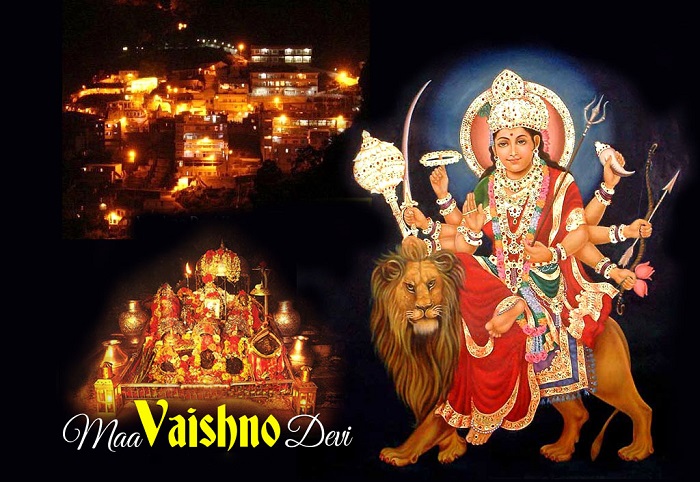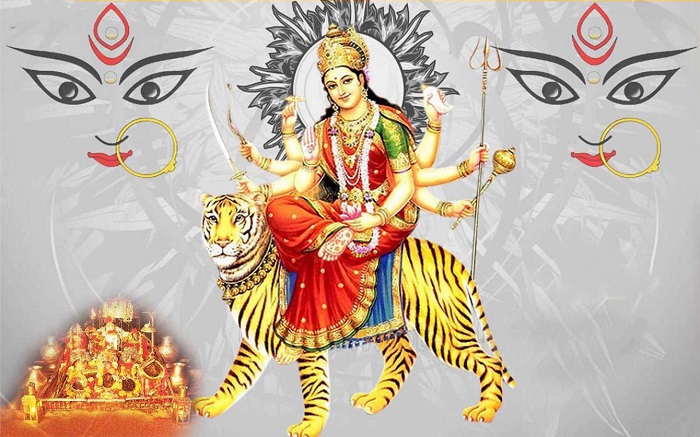Interesting Facts about Vaishno Devi
Things You May Not Know About Vaishno Devi

Vaishno Devi is amongst the most revered Hindu pilgrimages sites in India. Nestled in the Trikuta Hills in Jammu, the cave temple of Goddess Vaishno Devi, who is the manifestation of Goddess Parvati or Shakti is the said to be the abode of 33 Hindu gods.
1. The legend of the powerful mother Goddess

The temple of Goddess Vaishno Devi is one of the major and sacred Hindu temples dedicated to Parvati or Goddess Shakti, the Divine Consort of Lord Shiva. This beautiful temple lies ensconced among the picturesque hills of Vaishno Devi, in the state of Jammu and Kashmir in India. Hindus venerate Vaishno Devi, also commonly referred to as Mata Rani and Vaishnavi, is the very manifestation of the Mother Goddess Shakti.
2. Exact Location of the Vaishno Devi Mandir (Temple)

The Vaishno Devi Mandir is located close to the town of Katra, in the Reasi district. It is one of the most revered places of worship in India. The shrine is situated at an altitude of 5300 feet above sea level and lies at a distance of approximately 12 kilometres from Katra. It has been recorded that close to 8 million yatris (pilgrims) visit the temple every year, from each and every part of the world.
3. Exact Location of the Vaishno Devi Mandir (Temple)

It is believed to be the second most visited religious shrine in India, coming after the Tirumala Venkateswara Temple. The temple premises are maintained by the Sri Mata Vaishno Devi Shrine Board. Pilgrims can access the temple by rail via Udhampur to Katra. The Jammu Airport is the best way to reach the shrine for those travelling by flight.
4. Birth and Childhood of Mata Vaishno Devi

According to legend, Mata Vaishno Devi was born in the Southern part of India, to Ratnakar Sagar. Her parents had been childless for several years and yearned to sire a child. Just the night before the birth of the Divine Child, Ratnakar had promised that he would never ever interfere with whatever his child chose to do later in life. Mata Vaishno Devi was born the next day and was named Trikuta.
5. Rama blessed Vaishnavi

Seeing the beautiful girl with the divine glow, deep in prayer and meditation, he approached her and blessed her. Trikuta told Rama that she had already accepted him as her husband. Rama, being Eka Patni Vrata (vowed to have only one spouse), had decided that he would wed and be faithful only to Sita.
6. The first one to observe Navratras

The Divine Mother then decided to observe the 'Navratra', to pray for the victory of Lord Rama against Ravana. Even today, devotees read the Ramayana during the 9 days of the Navratri festival. Rama also promised her that the entire world would sing her praises and revere her as Mata Vaishno Devi. It is due to Rama's blessings that Mata Vaishno Devi attained immortality and now attracts several hundreds of thousands of pilgrims to the shrine each year.
7. Another legend regarding Vaishno Devi

According to legend, at the time when the Mother Goddess was engaged in waging terrible wars against and destroying the Asuras or demons causing chaos in the world, Her three main manifestations, namely, Maha Kali, Maha Lakshmi and Maha Saraswati united into one single power, pooling in their collective spiritual strength. This unification created a bright tejas or aura and a beautiful young girl emerged from this tejas.
8. Vaishnavi grants moksha (liberation) to Bhairon Nath

On the way to the mountains, Vaishnavi took several halts at Banganga, Charan Paduka and Adhkwari. She ultimately reached the cave where she intended to continue her tapasya. Bhairon Nath followed her there as well. Finally, losing all patience, she decided to kill him. Coming out to the mouth of the cave, she beheaded him. Bhairon Nath’s soul, realizing his folly after his death, approached the Goddess and prayed to her for forgiveness.
9. The holy shrine of Sri Mata Vaishno Devi

The Goddess then decided to shed her human form and take the form of a rock in order to continue uninterrupted with her meditation. Vaishnavi, hence, gives her devotees darshan in the form of a five and half feet tall rock, with three pindies or heads on the top. The cave where she transformed herself is now the holy shrine of Sri Mata Vaishno Devi and the pindies form the sanctum sanctorum.
10. The Legend of Pandit Shridhar

Some even taunted him for planning to hold a Bhandara, when he did could not even feed himself. As the day of the planned Bhandara drew closer, Shridhar started getting worried about how he was going to feed so many guests. Shridhar could not sleep a wink on the eve of the Bhandara. He kept thinking of ways and means to collect more food and provisions to feed his guests the next day, but could not arrive at any solution whatsoever.
11. Establishment of the Vaishno Devi Shrine

One version of the tale narrates that all the three Mahadevis appeared before him and also introduced to him to the Three Pindies. The deity gave him the right to worship her idol, also asking him to spread the glory of her shrine. Further, she blessed him with a boon that he would have four sons. Pandit Shridhar completely surrendered to her will and decided to spend the rest of his life in the worship of the Goddess.
12. The call of the Divine Mother

Followers of Mata Vaishno Devi believe that no one can visit her temple unless and until she issues a "bulawa" to them, that is, till she calls them to visit her shrine. Irrespective of caste, creed and social status, it is said that a journey to the sacred shrine of Vaishno Devi can materialize if and only if she wills it and blesses the devotee with her darshan. In fact, many devotees have been said to experience this first hand.
13. History of the Vaishno Devi Temple

There is no exact record as to when the shrine of Vaishno Devi came into existence. Certain geological studies seem to indicate that it may be nearly a million years old. Though the Vedas make no mention of Mata Vaishno Devi, the earliest reference to a mountain deity named Trikuta has been made in the Rigveda. It is worth noting here that the worship of Shakti and other female deities started only during the Puranic era.
14. In the Mahabharata

The Mahabharata makes a reference to the Mother Goddess. The epic states that just before the great War of Kurukshetra, Arjuna, on the advice of Shri Krishna, meditated upon the Goddess, seeking her blessings for victory. At this juncture, Arjuna describes the Devi as "Jambookatak Chityaishu Nityam Sannihilaye", meaning, "the one who permanently resides in the temple located on the slope of the mountain in Jamboo". Scholars say that he could well be referring to the Jammu of that time.
15. Worship of Mata Vaishno Devi

Vaishno Devi is believed to bestow strength to the weak, sight to the blind, wealth to the poor and bless childless couples with children. This very powerful deity, it is said, is also benevolent enough to fulfill one and all of her devotees' wishes. This is why followers make it a point to visit her regularly, in spite of the shrine being quite unapproachable, location-wise.
Tag : Interesting Facts about Vaishno Devi, ardh kuwari, durga maa, things to know about vaishno devi, vaishno devi, Vaishno Devi Mandir, Lesser Known Facts about Vashno Devi Temple